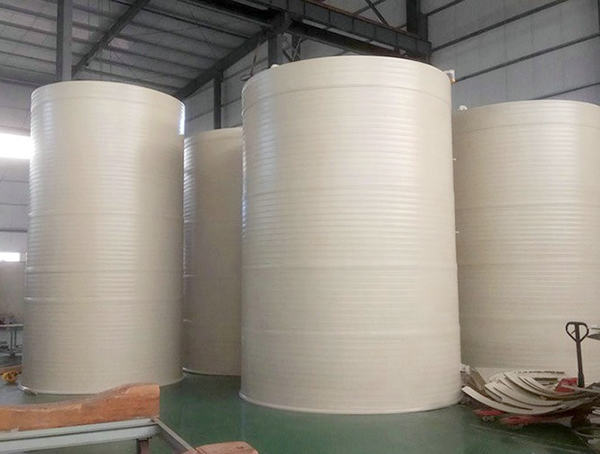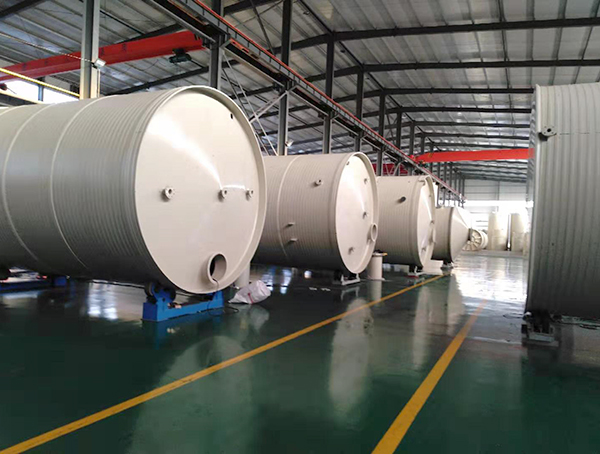Sichuan PPH storage tank manufacturer
HDPE storage tank is used as a sealed vessel for storing liquid or gas, which is called storage tank. The construction of HDPE storage tank project is an indispensable and vital infrastructure construction for oil and gas, chemical industry, grain, oil and food, food factory, fire safety, transportation, metallurgy industry, national defense safety and other professions. Because the area and environment of use are different, the intensity of sunlight is also different. The intensity of sunlight will have a certain impact on the service life of HDPE storage tanks, so sunscreen is also part of daily maintenance, which can extend the service life and reduce daily wear and tear. In the application process of HDPE storage tank, if conditions permit, it can be placed indoors, which can effectively avoid the problem of sunscreen. However, if the HDPE storage tank is placed outdoors, it must be maintained if it is exposed to wind and rain. Make a sunshade to prevent direct sunlight. The other way is to apply a light color coating on the surface of HDPE storage tank to reduce heat absorption and resist ultraviolet rays, and also improve the aging resistance of HDPE storage tank. In use, factors that can cause certain damage should be avoided, especially the sunscreen problem of polypropylene storage tank.

Sichuan PPH storage tank manufacturer
HDPE is a part of the plastic recycling market with rapid growth. This is mainly because it is easy to reprocess, has a limited degradation characteristics and is widely used in packaging. The main recycling is to reprocess 25% of recycled materials, such as post consumer recyclables (PCR), with pure HDPE to make bottles not in contact with food. In addition, due to the good insulation performance of HDPE storage tanks, polyethylene is used in many cables, and has good impact resistance even in low environment, In addition, this type of storage tank is more convenient for processing, and can be processed again after use, but it can not be used in industries directly contacting food after secondary processing.
Sichuan PPH storage tank manufacturer
The key manufacturing method used in the production of PPH storage tank is one-time forming coiling manufacturing method, so it is simple in structure. The application of PPH storage tank is relatively convenient due to its simple construction. When the rubber bearing is a plastic rubber bearing, the compressive strength, stiffness, service life and total number of manufacturing shall be considered. When the rubber bearing is a metal rubber bearing, the other standards shall be the same as 1. In addition, the surface of metal rubber bearing shall be corrosion resistant. When the rubber bearing is a concrete rubber bearing, the concrete rubber bearing of the first horizontal tank shall consider the compression strength provisions, and the total number of rubber bearings shall be 2. When there are several rubber bearings, their design elevation shall be the same, and there is no need for uneven ground settlement, and the bottom shall be basically flat.

Sichuan PPH storage tank manufacturer
What are the anti-corrosion treatment of PPH storage tank? For PPH storage tanks storing oil and product oil, since the performance required by the anti-corrosion materials in PPH storage tanks is electrostatic conduction, all PPH storage tanks shall be subject to anti-corrosion treatment with electrostatic conduction coating. The treatment of the external anti-corrosion coating of the tank is a comprehensive treatment that takes into account the anti-corrosion performance, weather resistance and aesthetic performance of the tank. In the design of anti-corrosion coating for PPH storage tank, it is necessary to consider that each anti-corrosion coating has temperature resistance and compatibility. If the alkyd anti-corrosion coating is used, it is necessary to avoid direct matching, because it will react with zinc powder. The cathodic corrosion protection of the tank is divided into impressed current cathodic protection on the outside of the bottom plate of the tank, and protective treatment on the anode of the ponding layer in the tank.







